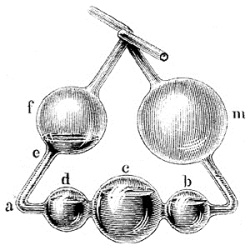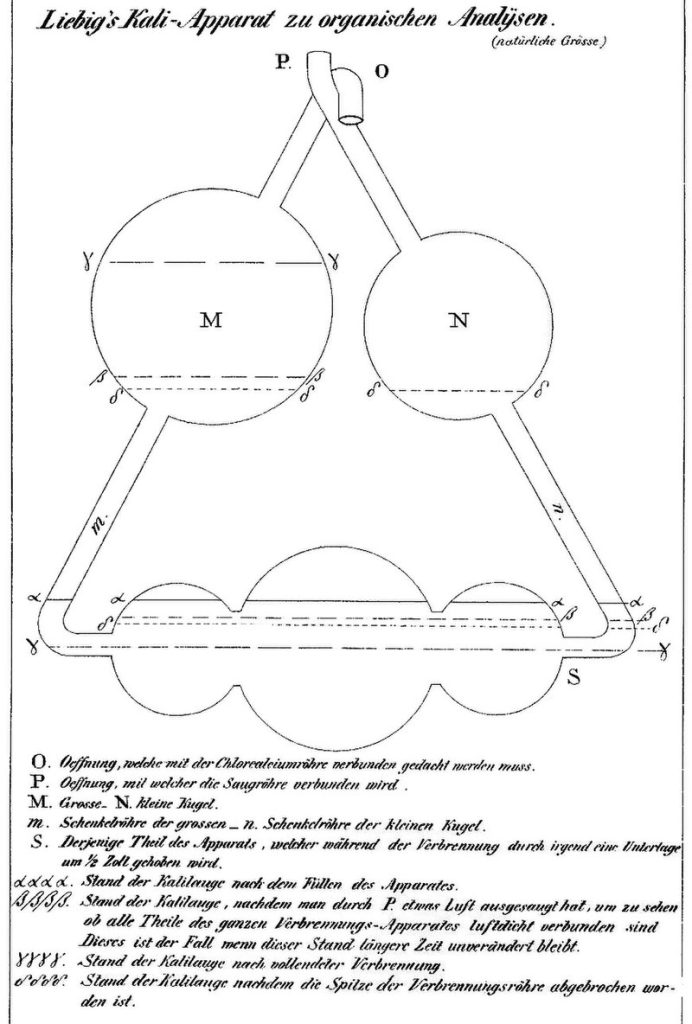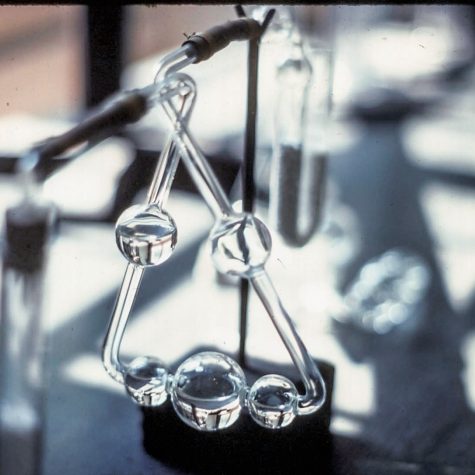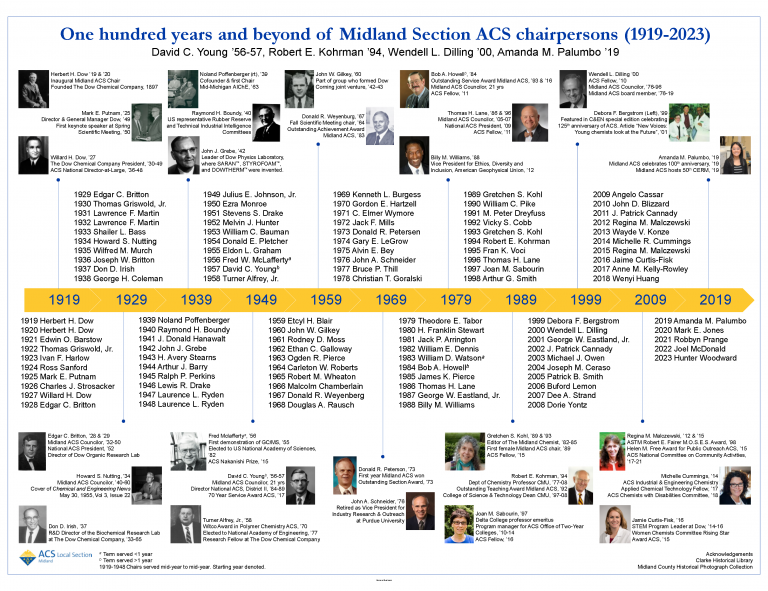The America Chemical Society
Founded in 1876 and chartered by the United States Congress, and currently with more than 154,000 members, the nonprofit American Chemical Society (ACS) is the world’s largest scientific society.
Our mission is to advance the broader chemistry enterprise and its practitioners for the benefit of Earth and its people. Our vision is to improve people’s lives through the transforming power of chemistry.
The ACS is one of the world’s leading sources of authoritative scientific information.
It is at the forefront of the evolving worldwide chemical enterprise and the premier professional home for chemists, chemical engineers, and related professions around the globe.
History of the Midland Section
On December 8, 1919, the Midland Section of the American Chemical Society was founded in Midland, Michigan. The Section now serves Midland, Bay, Saginaw, Gratiot, and Isabella Counties.
According to the National Charter (H.R. 7709, effective January 1, 1938), which incorporated the American Chemical Society, “The objects of the Midland Section include the following:
- Encourage in the broadest and most liberal manner the advancement of chemistry in all its branches
- Promote research in chemical science and industry
- Improve the qualification and usefulness of chemists through high standards of professional ethics, education, and attainments
- Increase and diffuse chemical knowledge
- Promote scientific interests and inquiry…”
To this end, the Midland Section has numerous programs for ACS members, students, educators, and the wider community.
Midland in 1919
To better understand the influence of chemistry on Midland, researchers investigate the historical context of when the section was founded. The chemical industry in Midland began to develop in 1919 amidst a backdrop of great local and national change. The citizens of Midland in 1919 were recovering from World War I and the flu pandemic of 1918, prohibition was a year away, and states were beginning to vote on women’s suffrage. The population of Midland was around 5,400. Although in 1919, Midland was still a small, budding community, it soon would grow to be one of the largest and most important chemical production centers in the world.




The kaliapparat (seen above) is a laboratory device invented in 1831 by German chemist Justus von Liebig for analysis of carbon in organic compounds. As carbon is the basis for countless chemical reactions, determining the exact amount of it makes the purpose of the kaliapparat highly important. This tool would have been used by early chemists constantly and could even be considered a “founding tool” of chemistry.
The tool consists of a series of five glass bulbs containing a solution of potassium hydroxide [KOH], or caustic potash to absorb carbon dioxide [CO2] formed upon burning test samples. Carbon content is calculated knowing the weight of the absorbed CO2. This reaction is similar to the “magic breath-alyzer” experiment of blowing one’s breath containing CO2 through a straw into a glass beaker containing a solution of calcium hydroxide [Ca(OH)2], or lime water, which turns visibly cloudy with precipitation of calcium carbonate [CaCO3]. The word kali derives from the Arabic qalay, “to roast in a pan”, and al-qalay, “the roasted substance, i.e. alkali; the symbol for potassium is K (kalium).
As seen at the top of the page, the kaliapparat is one of the main features of the ACS logo.
Midland Section Chairs 1919-2023






